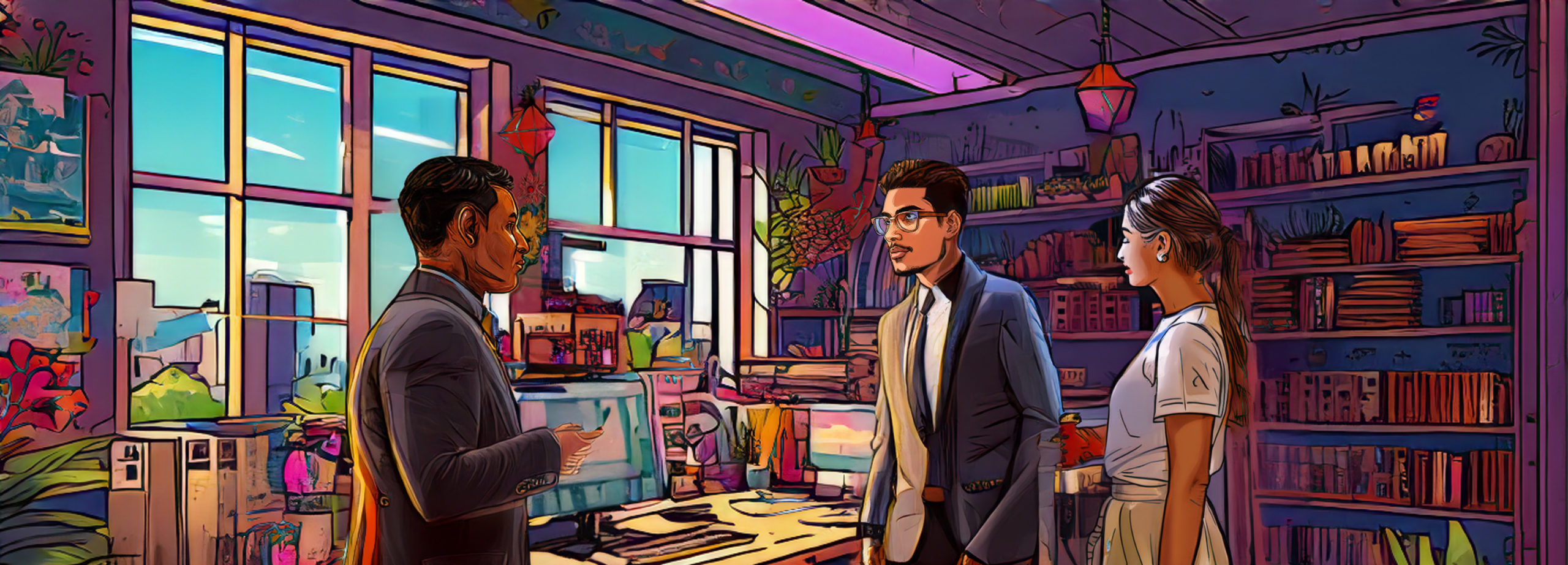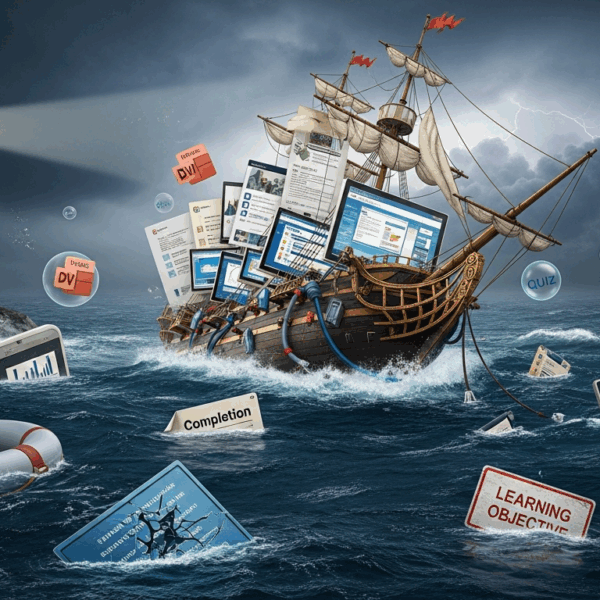For the past few months, generative AI — embodied by tools like ChatGPT, DALL·E, and Runway — has been shaking up the norms across many sectors, including distance learning. Automated content creation, talking avatars, educational videos generated in just a few clicks: the promises are vast. But amid this rapid acceleration, a crucial question arises for instructional designers and training managers: is generative AI a threat to human creativity, or, on the contrary, a powerful catalyst for innovation in e-learning?
Generative AI: A Creative Toolbox… But Not a Magic Wand
First, we must acknowledge the incredible potential of generative AI in streamlining e-learning content production. In just moments, these technologies can:
- Generate module scripts from simple briefs.
- Create visuals or videos that align with the intended messages.
- Adapt content to different language levels or cultural contexts.
This automation represents a major time-saver, especially for small teams or training organizations facing high demand for digital content. It also helps accelerate production cycles while maintaining a certain consistency in the output.
But beware the illusion of ease. A module generated by AI—no matter how impressive—may not always be pedagogically sound. It can lack nuance, proper instructional design, or simply a clear connection to the intended learning objectives. AI is a tool, not an instructional designer.
When the machine frees time for human creativity
Rather than seeing generative AI as a competitor, it is more fair to see it as an assistant. By automating the most time-consuming tasks – initial content writing, production of standard quizzes, video formatting – it allows designers to focus on added value: scripting, personalization and learner engagement.
Pedagogical creativity does not disappear. It evolves.
With AI, the designer’s role becomes more strategic. It is no longer just about “producing content”, but about thinking of memorable, interactive learning experiences that are aligned with business needs. This requires a critical look at the proposals of AI, an ability to refine, enrich, divert generated content to give them meaning.
The risks: standardization and loss of meaning
It would be naive not to mention the risks associated with excessive or poorly controlled use of generative AI in e-learning.
The first danger is standardization. If everyone uses the same tools to generate content, we risk seeing stereotyped modules emerge, bland, disconnected from the realities of the field. The learning experience becomes poorer, the commitment decreases.
Another risk: loss of meaning. By delegating design to the machine, some organizations may forget the importance of pedagogical diagnosis, connection with learners, adaptation to specific contexts. However, a good e-learning module is not only well written: it is well thought out.
Towards an augmented pedagogy: the alliance of human and AI
The real promise of generative AI is therefore not in replacing designers, but in enriching their capabilities. By combining human intuition and the power of AI, it becomes possible to:
- Quickly test several pedagogical approaches.
- Explore original formats, such as immersive simulation or interactive storytelling.
- Create more inclusive, accessible experiences that are better adapted to the profiles of learners.
The challenge, in the medium term, is to invent a new form of educational creativity, hybrid, where AI is not a crutch but a springboard.
Take back the creative power
Generative AI is deeply questioning our practices. It forces digital learning players to ask themselves the right questions: what is quality content? How do we capture the attention of learners in a saturated world? What part of humanity do we want to preserve in the learning paths?
This is not the end of pedagogical creativity. It may be, on the contrary, a new beginning.
Provided that you do not give the keys to the machine.
You want to explore the possibilities of AI in your e-learning projects ?
At Serious Factory, we support training organizations in the creation of engaging, scripted and real-life modules. With VTS Editor, you keep control over your content while integrating, if desired, AI tools to boost your creativity.
Interested in VTS Editor? Make an appointment with one of our digital learning experts to learn more.










